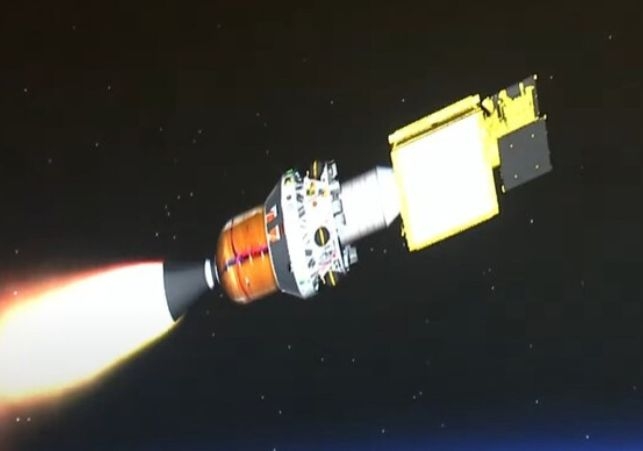ISRO: Earth observation mission PSLV-C61 fails due to pressure problems in 3rd stage


ISRO: Earth observation mission PSLV-C61 fails due to pressure problems in 3rd stage
Digital Desk: The Indian Space Research Organisation (ISRO) was unable to launch an Earth observation satellite aboard a PSLV-C61 rocket on May 18. The launch failed due to a malfunction in the third stage, according to space agency Chairman V Narayanan.
He stated that ISRO's trusty Polar Satellite Launch Vehicle (PSLV) is a four-stage rocket, with the first two stages being standard.
ISRO's 101st mission, an earth observation satellite launched by the agency's trusted PSLV rocket, was unable to be completed due to a pressure issue in the launch vehicle's third stage, according to the space agency.
Although the Polar Satellite Launch Vehicle (PSLV) launched on schedule at 5.59 a.m., the mission goals were not met.
Narayanan noticed a decline in the chamber pressure of the motor case, which prevented the mission from being completed. He also stated that they were reviewing the complete performance to prepare for a future effort.
The outcome of Sunday's launch startled many onlookers, as the PSLV has established itself as ISRO's most dependable launch vehicle. Following liftoff, the mission control center declared that the spacecraft would be tracked by multiple ISRO centers around the country until the second stage separated.
ISRO stated that the EOS-09 satellite, a repeat of the EOS-04 mission launched in 2022, failed to launch on time owing to a fault in the third stage. The satellite, which was intended to provide remote sensing data for operational applications, was launched at a height of around 450 kilometers.
The mission's payload featured a Synthetic Aperture Radar (SAR) that could produce images for a variety of Earth observation applications, such as agriculture, forestry, disaster management, urban planning, and national security.
ISRO intended for a debris-free mission, and scientists reported that enough fuel had been given for de-orbiting the satellite after its operational life, ensuring it would decay within two years to reduce space debris.








.jpg)
